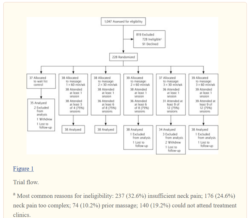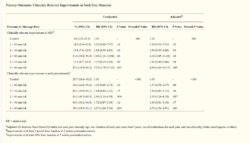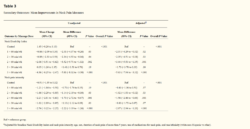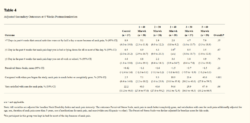This is a question which clients may ask and we may have a standard answer, but is it actually based on any evidence? Is there any evidence? It turns out that there is some randomised research on massage for nonspecific neck pain, that is neck pain which has no obvious physiological cause. The research wanted to see if there was a dose-dependent response – in other words is there an optimum frequency of massage for maximum reduction of neck pain. The answer, it seems, is that there is.

Neck pain is the eighth leading cause of disability in the US and fourth leading cause of disability worldwide. The 2014 US study*around Seattle, led by Karen Sherman, recruited 1027 people aged between 20 and 64 in 2010/2011 with chronic, non-specific neck pain, assessing and excluding all but 228 from the study. People were excluded for reasons including eg:
• Neck pain too mild
• Neck pain too complex/physiologically identifiable cause
• Having had any massage in preceding three months
• Having had neck massage in preceding year
• Inability to speak English
Table 1

Participants were divided into 5 groups:
• No massage control group – allocated to wait list
• 1 x 60 minutes neck massage per week
• 2 x 30 minutes neck massage per week
• 2 x 60 minutes neck massage per week
• 3 x 30 minutes neck massage per week
• 3 x 60 minutes neck massage per week
The protocol for each treatment was tightly controlled and included a “range of motion assessment, hands-on check-in, massage applied directly to the neck, addressing compensatory patterns, and integration (reestablishment within a patient of being in a unified body after having received intensive isolated work). Therapists were given time limits for each part of the massage and permitted to use a broad range of massage techniques. No self-care recommendations were permitted. Eight licensed massage therapists with at least 5 years of experience were trained in the study protocol and provided massage treatments in the research clinic at Group Health. Treatment fidelity was monitored by a research assistant who was also a massage therapist and who observed a treatment for all therapists and 34% of those randomized to massage (4% of all treatments).” The participants had a base-line assessment of their neck pain, four weeks of treatment and follow up assessment after five weeks.
So what were the results? Was there a dose-dependent response?
The answer was a clear ‘yes’. The researchers’ findings also have important considerations for future research or for analysis of previous research. The research demonstrated that the beneficial effects of massage in this application do increase with dose. However the 30 minute massages, either two or three times a week did not provide significant benefits compared with the wait list control. It was the 60 minute massages that really showed the dose dependent increase, especially where the massage took place three times weekly. Massage participants were three times more likely to have a meaningful improvement if they had a 60 minute neck massage twice a week and five times more likely to have a meaningful improvement if they had the 60 minute treatment (see protocol above) three times a week.
There were some transient increases in pain, but these were mostly mild.
The authors suggest that previous research in massage may not have considered an adequate dosage for most beneficial results.
Two key things stand out that need thinking about: 30 minutes for neck massage for nonspecific neck pain does not seem to be in the best interests of the clients, and the motivation of a client to invest in the frequency of treatment that will bring them the best results and perhaps relieve them of a disabling condition. This is where research does come into its own: recommendations are not based on a business case or habitual recommendations but on hard facts. They also provide evidence to provide to healthcare providers with whom you are building links.
Some of the same team also followed up by randomising participants to an additional six massage treatments. In general, by 12 weeks there were no great differences between all the initial groups unless the participants had originally received sessions of 60 minutes and were also in the booster group. By 26 weeks with no further treatments there were no significant differences between the groups. The authors suggest booster treatments should be incorporated into massage research as a matter of course.
Thoughts? Email us and share them at: thinktreehubrosemary@gmail.com
Results are summarised below for the main article, to read and download the full article go here:
https://www.ncbi.nlm.nih.gov/pmc/articles/PMC3948757/
Follow up research with booster treatments are here:



References:
*Sherman K, et al (2014) Five-Week Outcomes from a Dosing Trial of Therapeutic Massage for Chronic Neck Pain Ann Fam Med; 12(2): 112–120.
Cook A et al (2015) Randomized clinical trial assessing whether additional massage treatments for chronic neck pain improve 12- and 26-week outcomes. Spine J. 2015 Oct 1;15(10):2206-15.